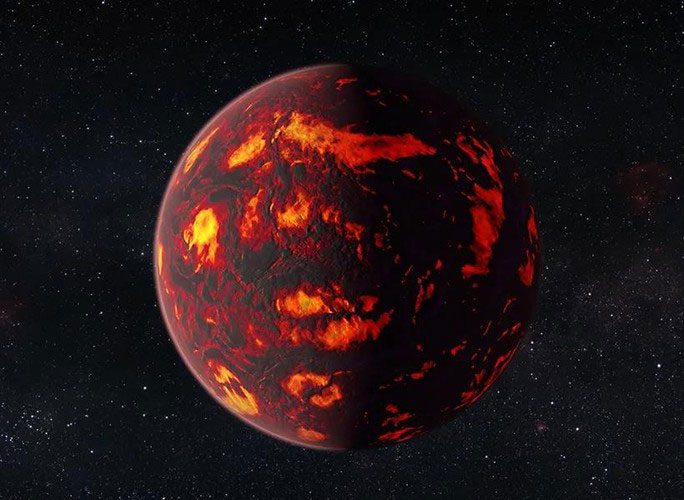A scientifically invaluable rock slab in Northwestern Canada proves that our planet once resembled a deadly sphere, just like Mars or Venus.
This treasure is a 4 billion-year-old granite slab, the oldest rock ever found on Earth, according to SciTech Daily.
It is a crucial key to deciphering the period during which Earth underwent dramatic changes, allowing us and all other living beings to have the opportunity to exist today.

Earth during the Hadean Eon (from its formation to 3.8 billion years ago) was a seamless, deadly sphere like other planets in the solar system – (Graphics from SPACE).
Among all known celestial bodies in the universe, Earth is the only planet confirmed to harbor life and is also the only planet identified with tectonic plate activity.
Our planet’s crust is not seamless; it consists of about 20 large and small plates that continuously move, causing continents and oceans to repeatedly “merge and separate” over 4.5 billion years of history.
This process is extremely important for maintaining an environment suitable for life, including a stable atmosphere, conditions conducive to the reactions that generate primordial life, and the necessary chemical balance…
However, the granite slab studied by a research team from China, Australia, and Canada, led by Professor Li Xianhua from the Chinese Academy of Sciences, indicates that Earth did not originate under such favorable conditions.
It wasn’t until 4 billion years ago, when Earth was over 500 million years old, that it still resembled a solid, deadly sphere, with a seamless crust like Venus or Mars.
This conclusion was reached through chemical analysis of the granite slab, revealing that the isotopes of silicon (Si) and oxygen (O)—two of the most common elements in Earth’s crust—were inconsistent with rocks that had undergone a “recycling” process, specifically lacking heavy Si isotopes.
If tectonic plates were active, the entire surface rock and mantle rock would have to undergo significant mixing, molding, and large-scale recycling. This process, through a phenomenon known as subduction, would have to draw ancient ocean floor rich in heavy Si isotopes into the Earth’s interior, recycle it, and then expel it again as granite at another location on the globe.
The absence of heavy Si in the granite indicates that Earth had not yet experienced subduction. After careful examination, researchers determined that Earth remained quiet in this state for another 200 million years. The 3.8 billion-year-old granite became “the rock of life,” clearly demonstrating that it had once been “recycled” by plate tectonics.
This dating determination represents a significant advancement, crucial for understanding what drove the planet’s transformation and how that transformation began.


















































